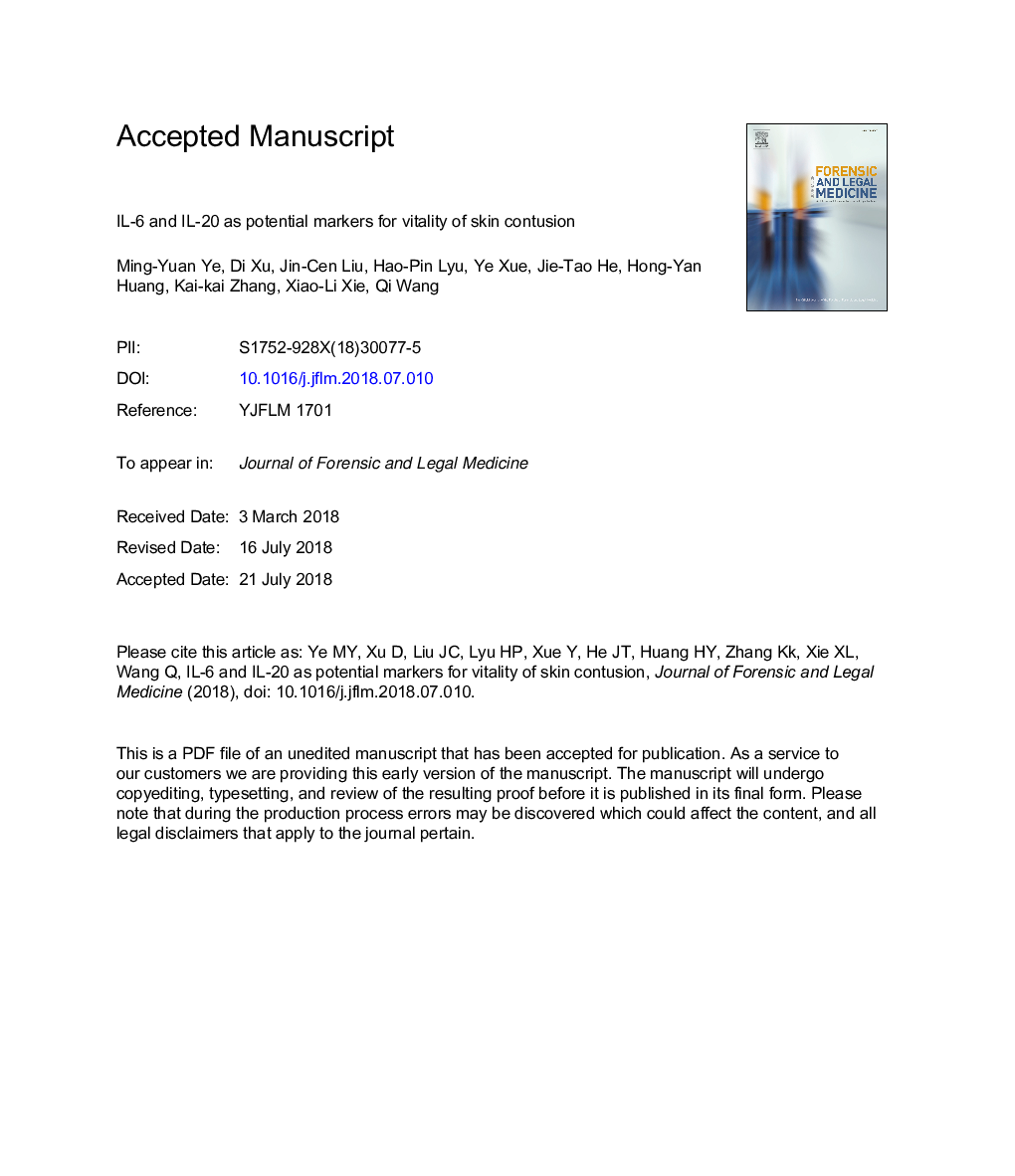| Article ID | Journal | Published Year | Pages | File Type |
|---|---|---|---|---|
| 6554879 | Journal of Forensic and Legal Medicine | 2018 | 27 Pages |
Abstract
The detection of vitality of wounds is very important in forensic practice. This study is performed using quantitative real-time reverse transcriptase polymerase chain reaction (RT-qPCR) in both mouse and human skin wounds for the application of IL-6 and IL-20 in order to differentiate intravital wounds from postmortem wounds. RT-qPCR analysis of contused mouse skin showed that increased IL-6 and IL-20â¯mRNA levels were found in comparison to intact skin tissues. The increased mRNA expressions of IL-6 and IL-20 were observed until 72â¯h after death in contused mouse skin, whereas there were no marked changes in these two cytokines in the postmortem contusion group. The alterations of IL-6 and IL-20 can also be detected in human skin wound samples. These finding suggest that mRNA levels of IL-6 and IL-20 might be used as potential markers for vital reaction.
Related Topics
Life Sciences
Biochemistry, Genetics and Molecular Biology
Genetics
Authors
Ming-Yuan Ye, Di Xu, Jin-Cen Liu, Hao-Pin Lyu, Ye Xue, Jie-Tao He, Hong-Yan Huang, Kai-kai Zhang, Xiao-Li Xie, Qi Wang,
